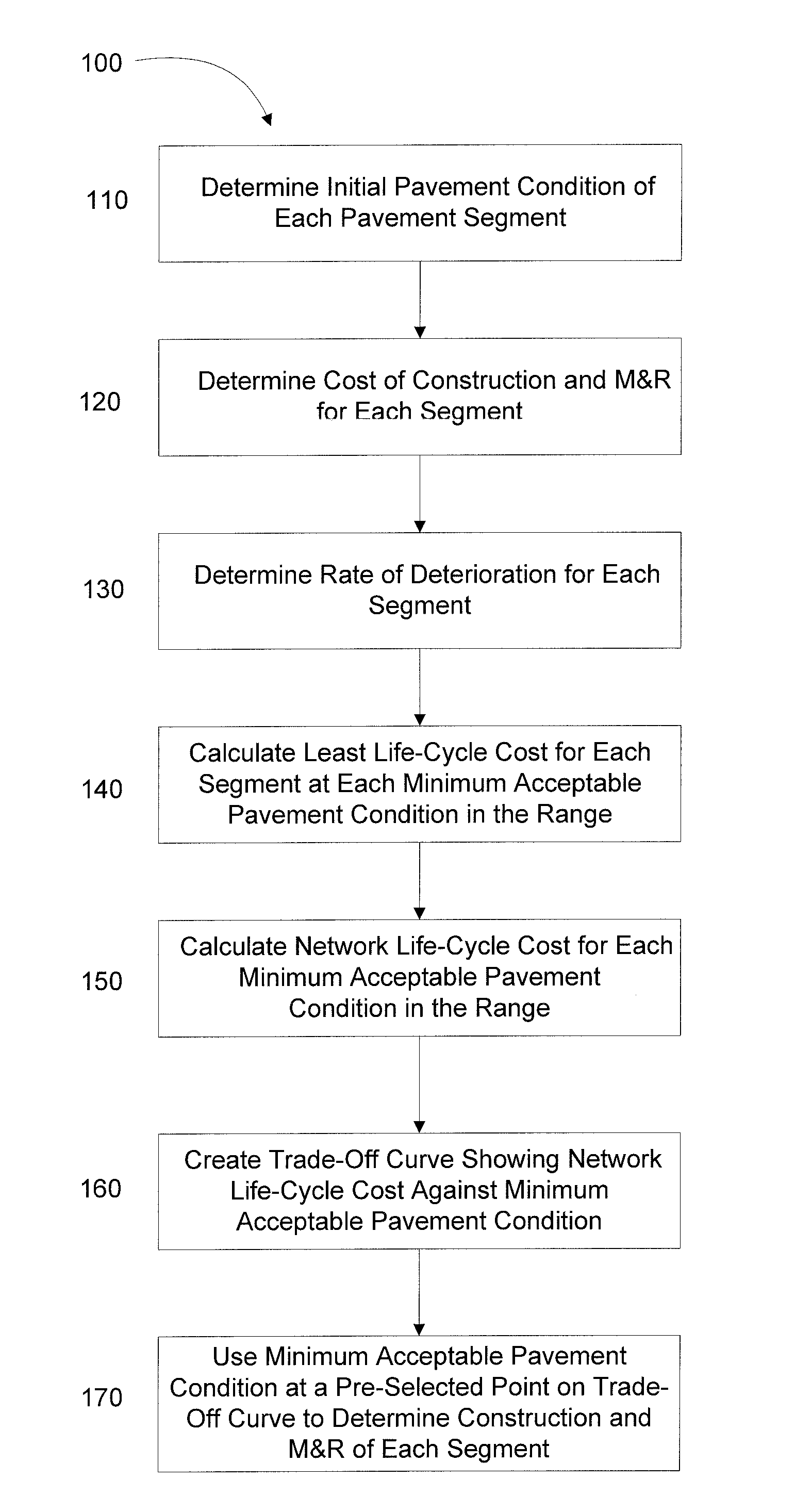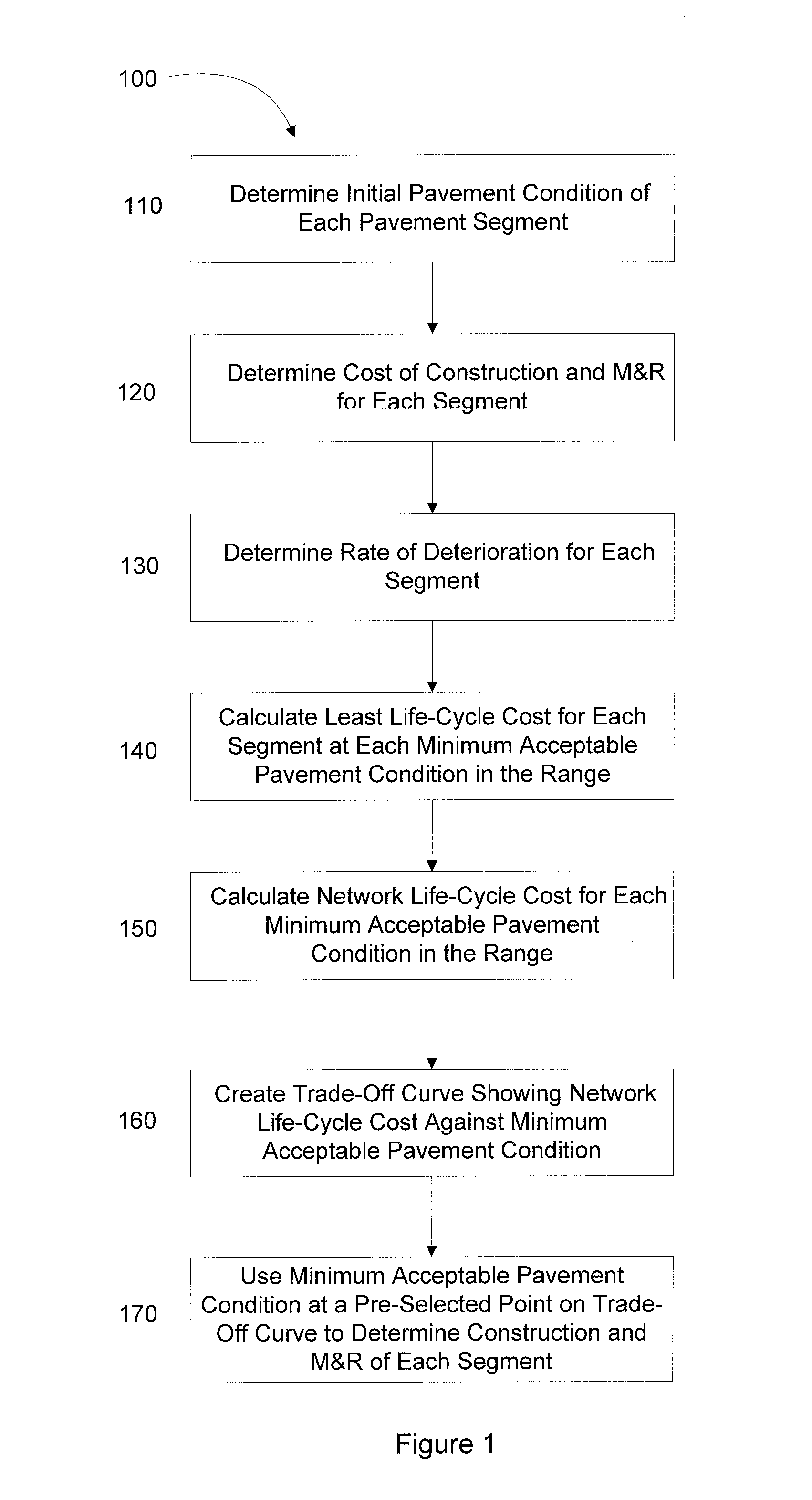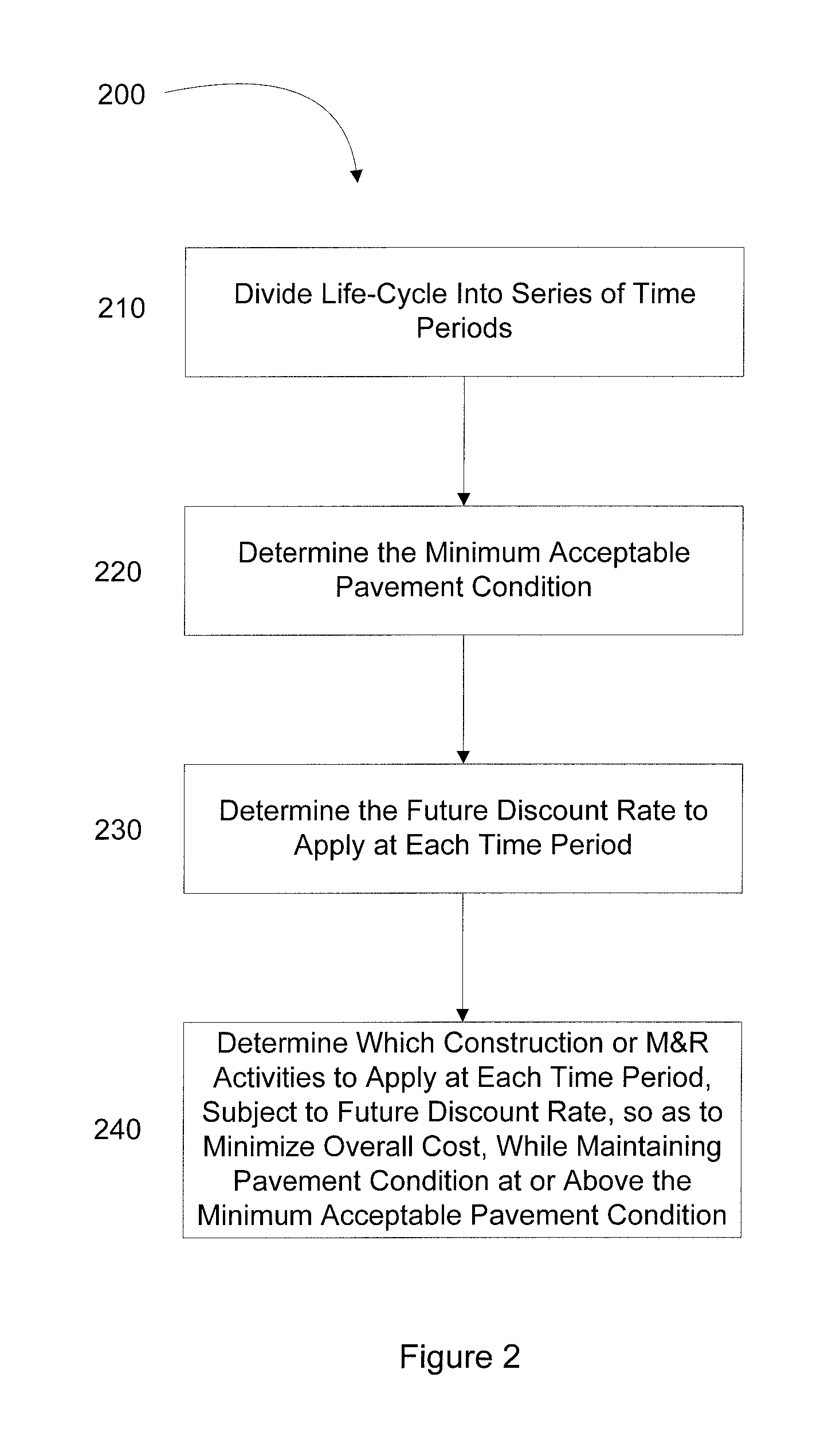Pavement management system
a technology of a management system and a management system, applied in the field of analysis systems, can solve problems such as difficult problems
- Summary
- Abstract
- Description
- Claims
- Application Information
AI Technical Summary
Benefits of technology
Problems solved by technology
Method used
Image
Examples
embodiment 100
[0018]With reference to FIG. 1, an embodiment 100 of the method of the present invention is herein described in detail.
[0019]At step 110, the initial pavement condition is determined for each pavement segment in the network. Any of numerous systems and methods for assessing pavement condition that are well known in the art may be employed to calculate pavement condition. In arriving at a pavement condition rating, numerous measurements and factors can be taken into account, such as surface distress, structural capacity, roughness, skid resistance, noise and water spray. By way of example only, one system for assessing pavement condition is the Present Serviceability Index (PSI), rating pavements on a scale from 0 (worst) to 5 (best). Typically, new pavements are rated 4.5, whereas unacceptable pavements are rated below 2.0. PSI is used to gauge pavement roughness. Pavement roughness is considered the most important indicator of pavement condition by the using public, particularly on...
embodiment 300
[0033]An alternative embodiment 300 of the present invention, as shown in FIG. 5, comprises a method of analyzing and minimizing the life-cycle cost of constructing, maintaining, and rehabilitating a set of objects for a predetermined life-cycle and associated range of minimum acceptable conditions thereof. The method comprises the following steps: (310) determining the initial condition of each object in the set; (320) determining the cost of construction and M&R activities over the life-cycle of each object in the set; (330) determining the rate at which the condition deteriorates for each object in the set; (340) determining the least life-cycle cost of construction and M&R activities for each object subject to each minimum acceptable condition in the range; (350) for each minimum acceptable condition in the range, adding up the least life-cycle costs for each object in the set, thereby calculating a total life-cycle cost corresponding to each minimum acceptable pavement conditio...
PUM
 Login to View More
Login to View More Abstract
Description
Claims
Application Information
 Login to View More
Login to View More - R&D
- Intellectual Property
- Life Sciences
- Materials
- Tech Scout
- Unparalleled Data Quality
- Higher Quality Content
- 60% Fewer Hallucinations
Browse by: Latest US Patents, China's latest patents, Technical Efficacy Thesaurus, Application Domain, Technology Topic, Popular Technical Reports.
© 2025 PatSnap. All rights reserved.Legal|Privacy policy|Modern Slavery Act Transparency Statement|Sitemap|About US| Contact US: help@patsnap.com



